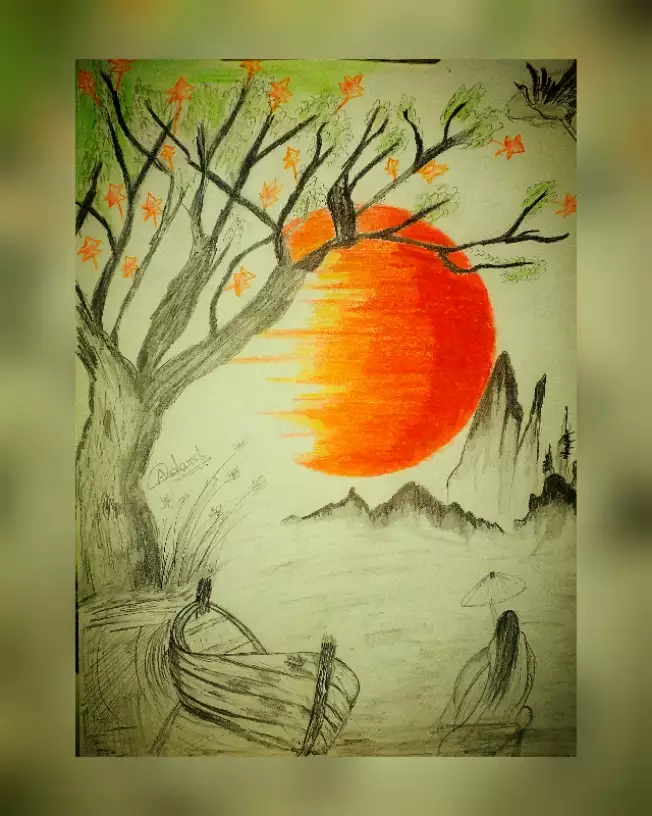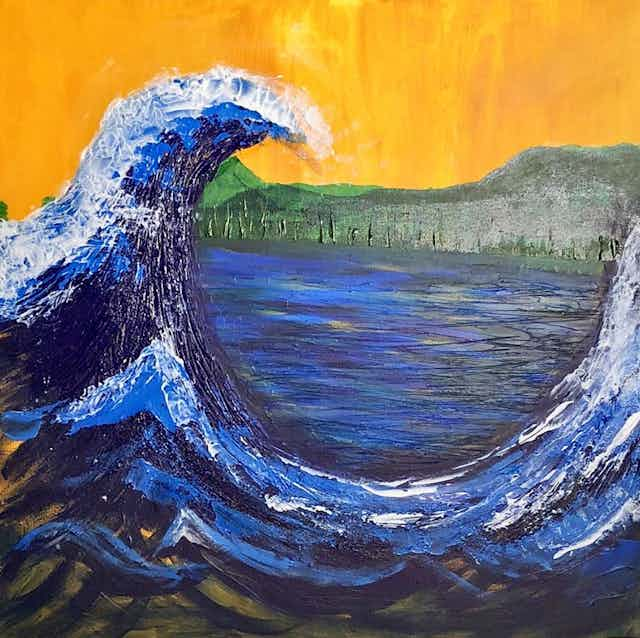The Evolution of Trump Art: From Early Critiques to Contemporary Point Of Views
The Evolution of Trump Art: From Early Critiques to Contemporary Point Of Views
Blog Article
Starting a Visual Journey With the Lyrical Analyses of Nature in Stylist Landscapes
Each brushstroke, each play of light and darkness, and each color selection in their jobs speaks quantities concerning the musicians' deep connection to nature and their capacity to equate its charm onto the canvas. As we explore the lyrical analyses of nature in Impressionist landscapes, we are invited to submerse ourselves in a world where reality and feeling link, providing a glimpse right into the artists' extensive admiration for the natural globe.
The Fascinating Brushstrokes of Claude Monet
Claude Monet's mastery of brushstrokes goes beyond mere method, imbuing his landscapes with a heavenly top quality that enthralls and captivates customers - trump art. His innovative usage of color and light, incorporated with his unique brushwork, develops a sense of movement and life within his paints. Monet's distinguished series of jobs illustrating water lilies and his renowned haystacks showcase his capacity to catch the short lived impacts of light and environment

Taking On Light and Darkness With Camille Pissarro
Embodying a comparable reverence for the interaction of light and shadow, Camille Pissarro's creative vision unravels as a harmonious exploration of the all-natural world's luminous subtleties. Pissarro, a key number in the Impressionist activity, masterfully caught the vibrant connection in between light and darkness in his landscapes. His adept use color and brushwork permitted him to communicate the subtle changes in light that define different times of day and seasons.
Pissarro's paints typically include spotted sunshine filtering with leaves, casting elaborate patterns of light and darkness on the planet listed below. In jobs such as "Hoar Frost, the Result of Snow, Pontoise," Pissarro skillfully depicts the crisp brightness of winter months sunshine juxtaposed with the great darkness that specify the snowy landscape. By welcoming both light and shadow in his compositions, Pissarro invites customers to submerse themselves in the all-natural beauty and transient impacts of light worldwide around them.

With Pissarro's jobs, we are reminded of the transformative power of light and shadow, welcoming us to stop and appreciate the fleeting moments of charm existing in the daily landscapes that border us.
A Harmony of Color Styles by Edgar Degas
Edgar Degas coordinates a dynamic symphony of colors in his masterful artworks, instilling his structures with a vibrant interaction of colors that astound the viewer's gaze. Understood mainly for his ballet professional dancers and intimate scenes of Parisian life, Degas adeptly adjusted colors to convey mood and movement in his paintings. trump art. His usage of vibrant, different shades and refined tonal variations created a sense of depth and vibrancy within his works
Degas' shade combination commonly contained abundant blues, deep greens, and cozy oranges, which he applied with confident brushstrokes to catch the essence of his topics. Whether portraying a ballerina mid-performance or a group of pals conversing at a cafe, Degas' colors not only showed the scene yet likewise evoked a feeling of emotion and energy.
In Addition, Degas' trial and error with light and shadow added an added layer of complexity to his shade structures, enhancing the total environment of his paintings (trump art). With his experienced manipulation of shade, Degas More Info produced an aesthetic symphony that proceeds to resonate with viewers today
Discovering Nature's Calmness With Berthe Morisot
Berthe Morisot's artistic vision provides a tranquil departure from the lively color symphonies of Edgar Degas, as she captures the peace of nature in her evocative landscapes. Recognized for her delicate brushwork and intimate representations of everyday life, Morisot's landscapes show a sense of tranquility and harmony.
Morisot's paintings often feature soft, low-key tones that convey a feeling of peace and calmness. Her jobs, such as "The Cradle" and "Summer's Day," showcase her capacity to capture the subtle appeal of nature in a manner that is both soothing and reflective to the visitor.
Unlike some of her Impressionist equivalents that focused on strong shades and vibrant compositions, Morisot preferred to produce mild, reflective scenes that invite the audience to reflect and pause. With her skillful usage of light and darkness, Morisot creates a sense of serenity that resonates with the customer on a deep psychological degree.
The Psychological Landscapes of Vincent Van Gogh
Vincent Van Gogh's landscapes strongly convey a depth of emotion through their dynamic brushwork and meaningful use of color. The Dutch post-impressionist musician is renowned for this his ability to record intense and raw emotions in his paintings, transcending standard depictions of nature. Van Gogh's turbulent individual life, noted by psychological wellness battles, substantially affected his art, instilling his landscapes with a feeling of worry, moody, or exuberance.
In works such as "Starry Evening" and "Wheatfield with Crows," Van Gogh's swirling brushstrokes and vibrant shade selections stimulate an extensive emotional reaction from audiences. The rough skies and agitated landscapes in his paintings reflect his internal chaos and psychological turbulence, inviting viewers to dive right into the intricacies of his mind.
Van Gogh's distinct visual language, identified by overstated point of views and bold usage of color, creates landscapes that reverberate with customers on a deeply emotional level. Via his art, Van Gogh invites us to see nature not just as an exterior fact however as a mirror of our innermost feelings and feelings.
Final Thought
Finally, the impressionist landscapes of artists such as Claude Monet, Camille Pissarro, Edgar Degas, Berthe Morisot, and Vincent Van Gogh supply a captivating and one-of-a-kind aesthetic interpretation of nature. Via their usage of brushstrokes, emotion, shade, and light, these artists have actually produced a harmony of pictures that stimulate a feeling of peacefulness and charm in the all-natural world. Their jobs proceed to inspire and charm audiences with their lyrical analyses of the landscapes around us.
Each brushstroke, each play of light and shadow, and each color selection in their works talks quantities regarding the musicians' pop over here deep link to nature and their capacity to translate its appeal onto the canvas. His cutting-edge use of shade and light, combined with his distinctive brushwork, produces a sense of motion and life within his paints. His proficient usage of shade and brushwork allowed him to share the refined changes in light that specify different times of day and seasons.

Report this page